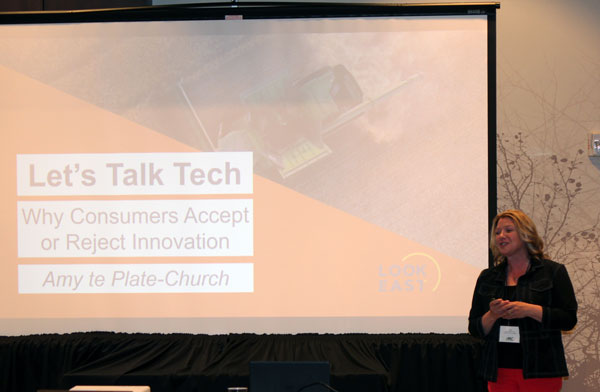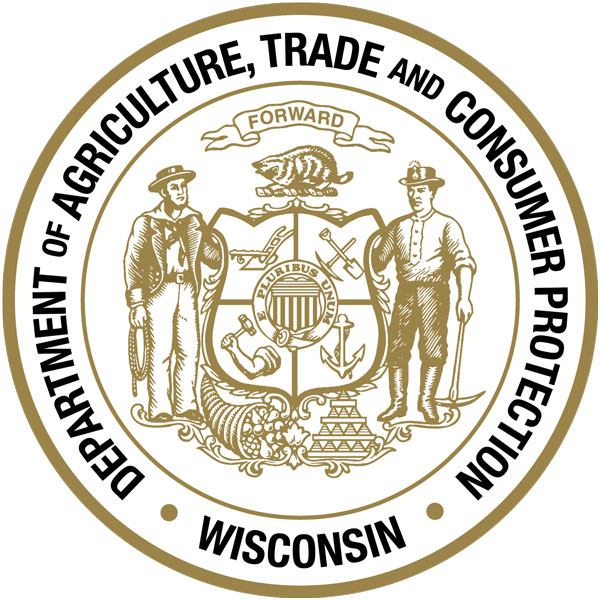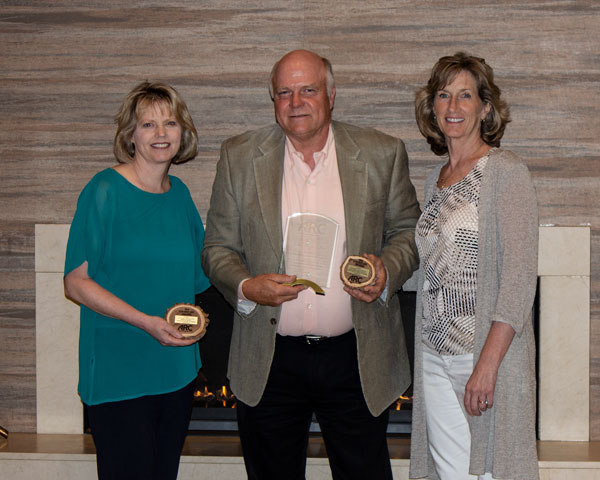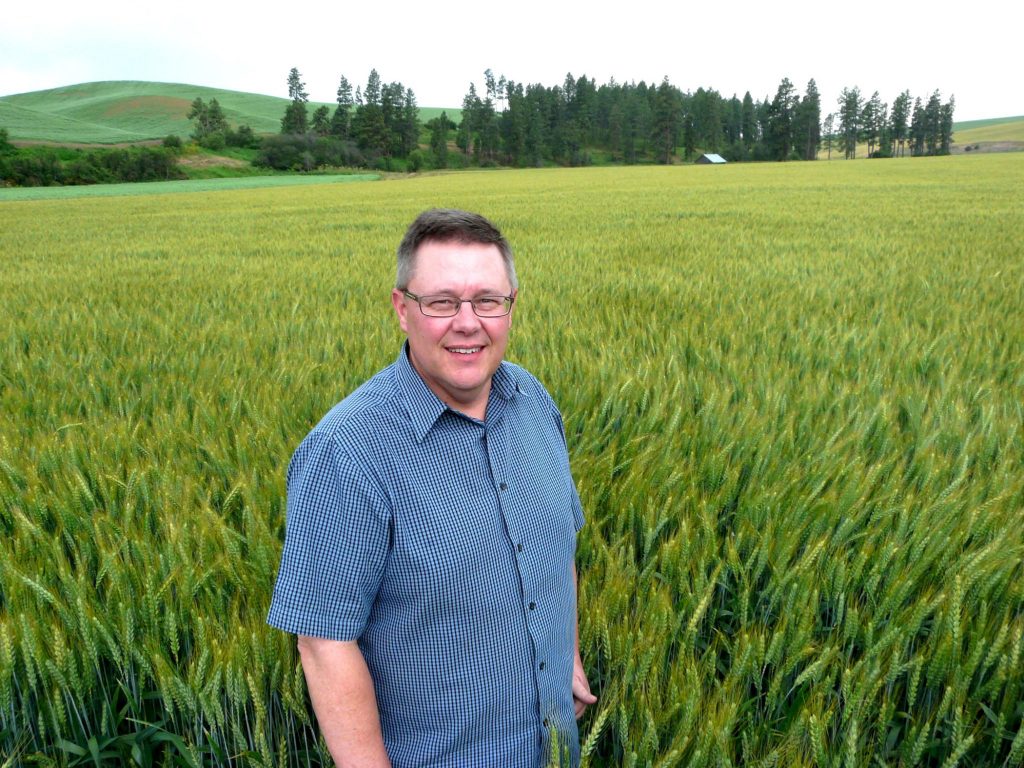2022 Summer ARCLight
Posted by: Christie Nissen on July 12, 2022
Posted in: Newsletter
Ag Relations Council Annual Meeting sparks ideas and plans for growth
The annual Agricultural Relations Council meeting wrapped up on June 23, in sunny Milwaukee. This year’s meeting featured a variety of outstanding speakers in our “Hot Topics” educational sessions and a fun, informative tour day. In addition, we recognized the best work over the past year in agricultural public relations at the Golden ARC Awards banquet on Wednesday evening.
The board approved the current budget at our meeting on Tuesday and had a very productive session in terms of brainstorming ways to maintain and grow membership and offer new, valuable content and opportunities to members, sponsors and prospective members. I’m happy to report that the ARC budget is in the black and we are poised for more growth and success in the coming years! Key statistics that I want to share with you are:
- We are currently at 99 professional members.
- We currently have 73 student members and 11 ACT advisor members.
- Twenty-seven campaigns and 45 tactics were submitted for this year’s Golden ARC awards
On Tuesday evening, Bader Rutter hosted a spectacular reception for those attending the meeting. The reception was at their new offices, located in beautiful downtown Milwaukee. At the reception, we surprised Bader Rutter Chairman Greg Nickerson by inducting him into the Agricultural Public Relations Hall of Fame – complete with a presentation and remarks from Lori Hallowell, Bader Rutter vice president and current board member of ARC.
Featured speakers at the annual meeting included:
- Lowell Barrington with Marquette University, who gave an insightful and informative presentation on the history of tensions between Russia and Ukraine, how the current conflict came to be and what its continued effects could be on global agribusiness and the U.S. economy.
- David Jordan and Nick Praznowski with Bader Rutter, who explained the agency’s industry analysis division, the Intel Distillery, which monitors and analyzes top voices and topics in food, agriculture and beverages.
- Amy te Plate-Church with Look East, who presented, “Let’s Talk Tech: Why Consumers Reject Innovation and How to Earn Acceptance for Ag Tech.”
- Krista Knigge with the Wisconsin Department of Agriculture, Trade and Consumer Protection gave a presentation on that agency’s involvement with its state agribusiness sector and the many ways it has to support growth and innovation in Wisconsin agriculture.
We began Thursday’s tour day at the Milwaukee Public Market and continued on to Crave Brothers Farmstead Cheese. We had a fascinating tour led by Charlie Crave, one of the founders of the Crave Brothers’ business. Highlights of this tour stop included seeing the anaerobic methane digester, an up-close tour of the rotary milking parlor and tours of animal housing areas.
We’ll be announcing some new initiatives and opportunities for both ARC members and prospective members in the coming weeks and months, so stay tuned for all of the news! And for those of you who will be attending the Agricultural Media Summit, I’ll be there representing ARC. Say “hi” if you see me out and about at AMS! We’re hoping all of the ARC members who attend will help promote the ARC organization and its benefits to both current and aspiring agricultural public relations professionals.
Let’s grow ARC together!
Sally Behringer
ARC President
E-mail: sally@mustangred.com
Cell phone: 785-218-9759
Extracting from the ‘noise’
By JoDee Sattler, National Mastitis Council
There’s a lot of noise in the marketplace, so how do marketers know whose voice is important? What are the crucial messages that “voices” are sharing?
 During the “Interpreting trends by listening to top voices in ag, food and beverages” ARC Annual Meeting presentation, David Jordan of Bader Rutter and Nick Praznowski of The Intel Distillery (powered by Bader Rutter) addressed these questions and related topics. They explained that unvetted digital publishing makes identifying truly valuable content a real challenge. Thus, The Intel Distillery was born in 2012 and has tracked the key stories from the 1,500 most influential people in the food and beverage field – those most responsible for starting new trends and conversations.
During the “Interpreting trends by listening to top voices in ag, food and beverages” ARC Annual Meeting presentation, David Jordan of Bader Rutter and Nick Praznowski of The Intel Distillery (powered by Bader Rutter) addressed these questions and related topics. They explained that unvetted digital publishing makes identifying truly valuable content a real challenge. Thus, The Intel Distillery was born in 2012 and has tracked the key stories from the 1,500 most influential people in the food and beverage field – those most responsible for starting new trends and conversations.
Primarily, The Intel Distillery tracks 1,500 voices that matter (e.g., influential individuals in media and government) and stories (40 topics and hundreds of subtopics) that matter – ranging from weather to international trade to food safety. The Intel Distillery experts cross tabulate the influential voices with the most discussed topics to distill relevant information. Then, they deliver one trusted source for current, actionable analysis to their clients. Ultimately, this information reveals future trends.
Praznowski explained that for some consumers – “food values” are more important than taste. Values lie in how the food was made. He noted that the definition of good food is evolving. “People are defining themselves by what they eat.”
Similarly, in the past, corporate purpose equaled maximum shareholder return. Since 2019, the pendulum is swaying more toward a commitment to the greater good of society. Thus, many companies now report their ESG commitment. They use Environmental, Social and Governance factors to show how far advanced they are with sustainability.
What are the current trends that matter?
- The Trifecta (weather/climate change/stewardship)
- Workforce (strikes, unions, H-2A program/immigrant labor)
- Instability of war
As marketers and public relations professionals, Jordan and Praznowski encouraged ARC members to take knowledge and “prepare to keep up.” Figure out how to act before you must react. Tell good stories – stories that help position agriculture as a way for food and brands to have increased relevance. Make stories personal. As yourself, “How are you engaged on a personal level?”
Words matter when talking to consumers about tech in ag
By Sarah Hill, Curious Plot
Consumer perceptions can make all the difference in whether or not a new technology is accepted in the agriculture industry, despite its scientific foundation, according to research from the Center for Food Integrity presented by Amy te Plate-Church with Look East PR at the 2022 Agricultural Relations Council Annual Meeting held June 21-23, in Milwaukee. Because food is such a part of people’s identity today, agriculture and food companies must position technology so as to set it up to gain consumer acceptance. Issues in the agriculture and food industries are fueled by consumer skepticism and mistrust. 
Although farming is one of the most trusted occupations, and only one in 10 consumers claim to know much about the agriculture industry, agriculture technologies, such as gene editing and plant-based meat alternatives, still struggle to gain traction with consumers. The Center for Food Integrity conducted 260 interviews of consumers and found that words and phrases matter when they’re used to describe technology in the food and agriculture industries, and that consumers need to believe that food is safe and natural. Millennials had the most positive impression of technologies used to grow food.
Te Plate-Church explained that consumers examine the benefit of technologies over the risks when making purchasing decisions. For example, gene editing plants promotes sustainability, which is the benefit. Gene editing techniques have also been used in human medicine, making the technology more familiar. Furthermore, gene editing can also happen naturally through natural selection, so consumers are more likely to be accepting of that technology.
Krista Knigge shares Wisconsin ag insights
By Karen Potratz, PeAk Strategic Business Development
Ah, Wisconsin. The land of beer, brats, cheese and ginseng. Wait. What? Ginseng?
 That’s right. Wisconsin is the nation’s No. 1 producer of ginseng, thanks to a unique combination of microclimate, soils and cultural influences in a single county in north central Wisconsin. The crop fetches premium prices from buyers who value its benefits in teas and nutritional supplements.
That’s right. Wisconsin is the nation’s No. 1 producer of ginseng, thanks to a unique combination of microclimate, soils and cultural influences in a single county in north central Wisconsin. The crop fetches premium prices from buyers who value its benefits in teas and nutritional supplements.
Krista Knigge shared these insights and more with Agricultural Relations Council Annual Conference attendees during her presentation “Wisconsin Agriculture Perspectives.” As administrator of the Division of Agricultural Development in the Wisconsin Department of Agriculture, Trade and Consumer Protection (DATCP), Knigge is passionate about Wisconsin ag. She oversees a staff of 24 with responsibility for a wide range of activities that encompass trade, marketing, economic development, grant programs and other support for agriculture.
Knigge noted that Wisconsin is one of the few states with strong international programs, working toward a lofty goal of increasing exports 25 percent by 2026. The Wisconsin Initiative for Agricultural Exports (WIAE) promotes exports of meat, milk and crops, as well as products that people might not immediately connect with farming. For example, WIAE coordinated meetings between lumber buyers in Pakistan and lumber suppliers in Wisconsin. A Global Dairy Summit is planned this fall at World Dairy Expo in Madison, Wis.
“We’re trying to plant seeds to build connections for Wisconsin export sales down the road,” she said.
Other Wisconsin DATCP programs in Knigge’s wheelhouse include:
- Wisconsin Farm Center, offering confidential resources, including financial and transition consulting, mediation and mental health resources
- Rural Realities podcast, addressing the many challenges facing the ag industry
- Alice in Dairyland, the state’s ag spokesperson program, now in its 75th year
Bader Rutter’s Greg Nickerson joins the Agricultural Public Relations Hall of Fame
 Greg Nickerson, Bader Rutter chairman and former CEO, joined a distinguished group of agricultural public relations professionals as the newest member of the Agricultural Public Relations Hall of Fame. Lori Hallowell, an Agricultural Relations Council board member, recognized her Bader Rutter colleague during the ARC Annual Meeting, held June 21-23, in Milwaukee. Many thanks to Agri Marketing magazine for sponsoring this award.
Greg Nickerson, Bader Rutter chairman and former CEO, joined a distinguished group of agricultural public relations professionals as the newest member of the Agricultural Public Relations Hall of Fame. Lori Hallowell, an Agricultural Relations Council board member, recognized her Bader Rutter colleague during the ARC Annual Meeting, held June 21-23, in Milwaukee. Many thanks to Agri Marketing magazine for sponsoring this award.
The largest advertising agency in Wisconsin and the largest agricultural marketing agency in the country, Bader Rutter doubled its size under Nickerson’s leadership. Key clients include Continental Properties, Corteva Agriscience, Zoetis, Milwaukee Bucks, Case IH, Zoro and Trane. Today, Bader Rutter employs 275 individuals in three states.
As chairman, Greg Nickerson splits his time between business development, financial oversight and serving on several non-profit boards representing Bader Rutter. During his three decades at the agency, he has seen it more than triple in size and diversify its client base into many different industries.
Among his accomplishments, Nickerson orchestrated an employee buy-out of the company from its founder in 2008, as well as leading the effort to locate and build a new headquarters in downtown Milwaukee. Active in the Milwaukee community, from industry and trade groups to philanthropic community service, he has served as a long-time board member of the Betty Brinn Children’s Museum, and currently serves as president of the board of directors. In 2017, National Agri-Marketing Association (NAMA) named Nickerson NAMA Marketer of the Year.
Golden ARC de Excellence award goes to MorganMyers
The Agricultural Relations Council (ARC) announced the winners of its 2022 Golden ARC Awards contest on June 22, in Milwaukee, during the group’s annual meeting. MorganMyers won the Golden ARC de Excellence Award – the contest’s best all-around entry in the campaigns division – for its “The SCN Coalition: Battling A Bug to Improve America’s Soybean Profitability and Sustainability” entry in the PR Campaigns – Issues Management category. The Golden ARC Awards contest has recognized exceptional work created by public relations professionals in the agricultural industry since 1990.
division – for its “The SCN Coalition: Battling A Bug to Improve America’s Soybean Profitability and Sustainability” entry in the PR Campaigns – Issues Management category. The Golden ARC Awards contest has recognized exceptional work created by public relations professionals in the agricultural industry since 1990.
This year’s Golden ARC Awards contest drew 72 entries – 27 campaigns and 45 tactics. Twenty-one entities, including individuals, agencies, companies, commodity groups and associations, submitted entries. In addition to the Golden ARC de Excellence Award, ARC presented 32 Golden ARC awards.
Find the complete list of award winners here.
Meet ARC’s new director – Steve Mercer
Raising my hand to serve as a director of the Agricultural Relations Council (ARC) feels like completing the circle of my career in agricultural public relations.
As a recent agricultural communications graduate from the University of Illinois in 1978, I followed Harlen Persinger as an associate editor of Harvestore Farmer magazine at Dave Brown & Associates. After I arrived at The John Volk Company in Chicago, working on the Merck Animal Health and Agrichemical account, I joined ARC in 1979. There was a brief but very enjoyable stint at Bader Rutter, working for Gary Myers and Lyle Orwig with Harlen, Dean and Karen Potratz, Kurt Lawton and other great colleagues. I returned to The John Volk Company and the Merck account just in time to help launch the Ivermectin product line. (Who knew that drug would be so effective as a de-wormer and a COVID treatment?)
 Around that time, I recall an ARC meeting at the Washington Hilton Hotel, memorable in part because I shared an elevator ride with Coretta Scott King and enjoyed my time with ARC colleagues like the late Ron Scherer, a University of Illinois grad and long-time DeKalb Hybrids executive, and current members Carroll and Jean Merry.
Around that time, I recall an ARC meeting at the Washington Hilton Hotel, memorable in part because I shared an elevator ride with Coretta Scott King and enjoyed my time with ARC colleagues like the late Ron Scherer, a University of Illinois grad and long-time DeKalb Hybrids executive, and current members Carroll and Jean Merry.
I continued serving agency clients in crop protection, animal health, seed and livestock equipment, and was a senior communications manager with Sandoz Crop Protection. My public relations work expanded to include other disciplines and along the line I let my ARC membership lapse. But I returned to my PR roots at Ceres Communications, a spinoff from what became Shandwick Public Relations in Bloomington, Minn., created by our friend Den Gardner. That was no doubt the start of the road back as Den recruited me to serve as a trustee of the AAEA Professional Improvement Foundation and he and Kristy Mach encouraged me to rejoin ARC.
As I continued serving American wheat producers as vice president of communications with U.S. Wheat Associates, I saw more value in joining ARC. Maybe it was the challenges I faced when rogue Roundup Ready wheat was found and the New York Times, NPR and Wall Street Journal reporters came calling, or the satisfaction of editing and publishing more than 300 issues of our Wheat Letter newsletter.
It is very appropriate that I will now likely end my agricultural public relations career – and start my freelance gig – as an ARC member. I’m happy to share more with you at smercer@uswheat.org or 913-449-4134.


